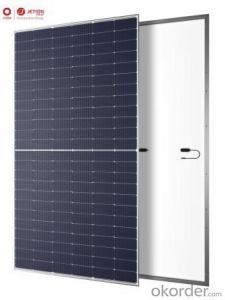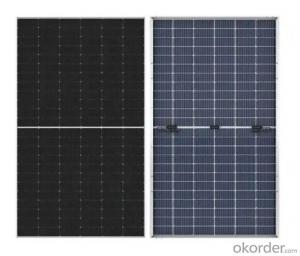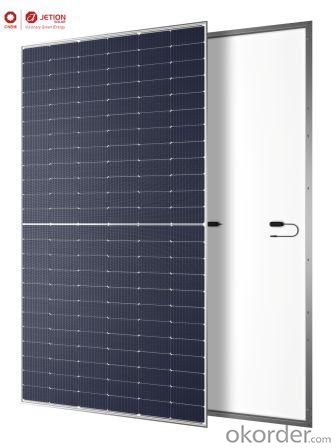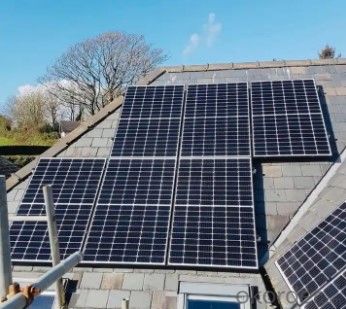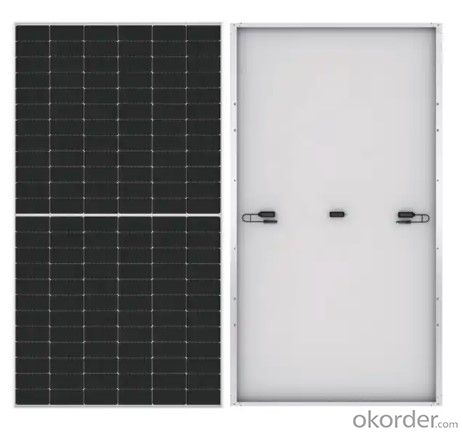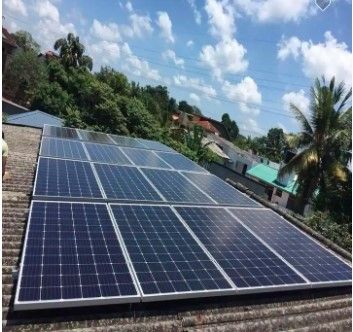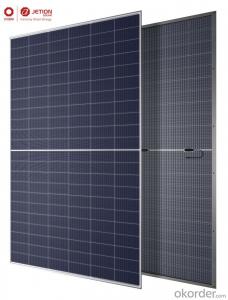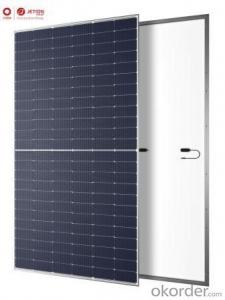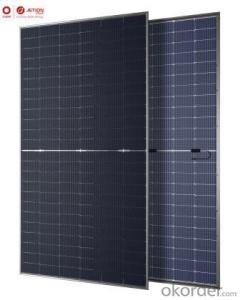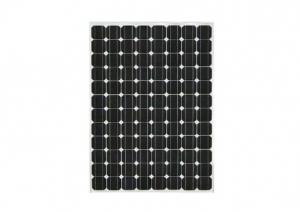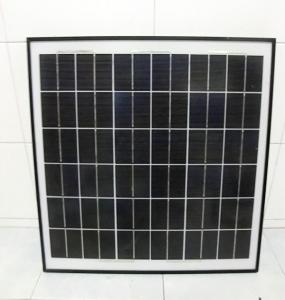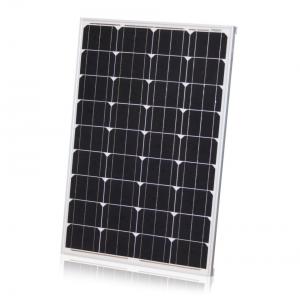Novec Solar Panels Bificial Solar Panels Perk 545W Mono Half Cell 525W 530W 535W 540W Factory Price NCQ
- Loading Port:
- SHANGHAI
- Payment Terms:
- TT OR LC
- Min Order Qty:
- 5 pc
- Supply Capability:
- 100 pc/month
OKorder Service Pledge
OKorder Financial Service
You Might Also Like
Specification

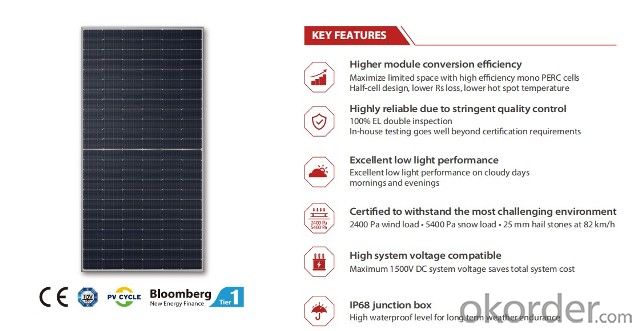
ELECTRICAL DATA*STC
TYPE(Tolerance:0-+5W) | JT540 SGh | JT545 SGh | JT550 SGh |
Maximum Power Pmax (W) | 540 | 545 | 550 |
Maximum Power Voltage Vmp (V) | 41.7 | 41.9 | 42.1 |
Maximum Power Current Imp (A) | 12.95 | 13.01 | 13.07 |
Open Circuit Voltage Voc (V) | 49.6 | 49.8 | 50.0 |
Short Circuit Current Isc (A) | 13.80 | 13.86 | 13.92 |
Module Effciency (%) | 20.9% | 21.1% | 21.3% |
STC: Irradiance 1000W/m², Cell Temperature 25°C, Air Mass AM1.5
Measuring tolerance: :±3%
ELECTRICAL DATA *NMOT
Maximum Power Pmax (W) | 405.21 | 409.25 | 413.31 |
Maximum Power Voltage Vmp (V) | 39.0 | 39.2 | 39.4 |
Maximum Power Current Imp (A | 10.39 | 10.44 | 10.49 |
Open Circuit Voltage Voc (V) | 46.6 | 46.8 | 47.0 |
Short Circuit Current Isc (A) | 11.12 | 11.16 | 11.2 |
NMOT: lrradiance at 800W/m², Ambient Temperature 20℃, Wind Speed 1m/s
MECHANICAL DATA
Solar Cell Type | Mono 91x182 mm(3.6x7.2 inches) |
Number of Cells | 144[2 x(12x 6)] |
Module Dimensions | 2278×1134×35 mm(89.7×44.6×1.4 inches) |
Weight | 29.0 kg(63.9 lb) |
Front Cover | 3.2 mm (0.13 inches), high transmission, AR coated tempered glass |
Back Cover | White composite film |
Frame | Silver, anodized aluminium alloy |
J-Box | ≥IP68 |
Cable | 4.0 mm² solar cable, 300 mm(11.8 inches) |
Number of diodes | 3 |
QUALIFICATIONS & CERTIFICATES
v IEC 61215,IEC 61730, IEC 62941
v ISO 9001: Quality Management System
v ISO 14001: Environment Management System
v ISO 45001: Occupational Health and Safety
JETION SOLAR
As a member of CNBM - a Fortune 500 company, Jetion Solar provides various product solutions,global EPC service and financing.
lts standard and high-efficiency product offerings are among the most powerful and cost-effective in the industry.
Till now, Jetion Solar has cumulatively more than 10 GW module shipment and 1 GW global EPC track records.
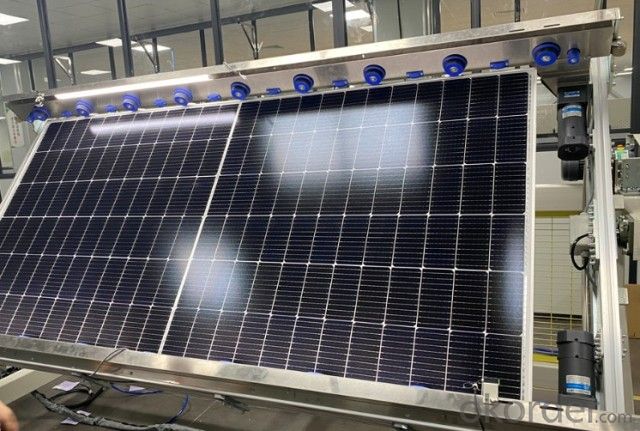
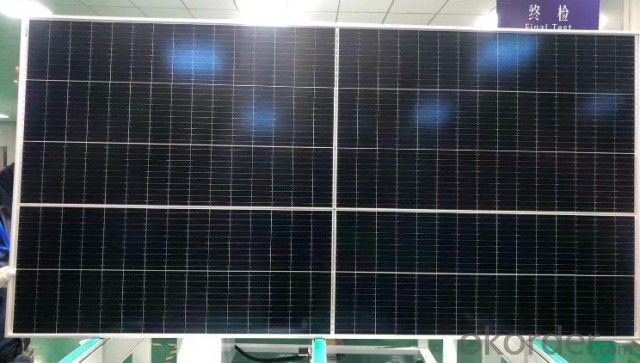
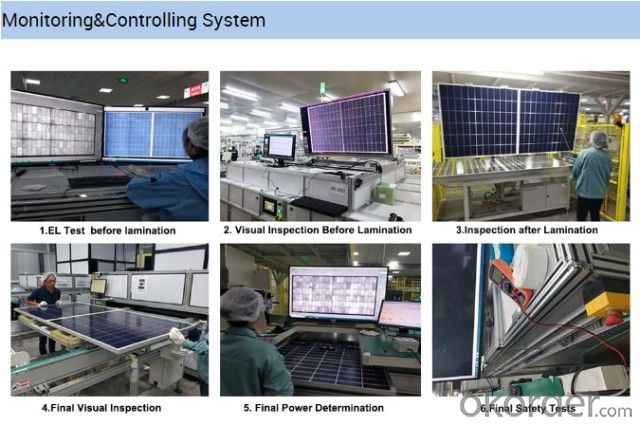
- Q: Ok Im trying to power my room using solar panels and I've figure out that I need about 700 watts to do so, but I really only use my electronics at night. I was wondering if I could buy lets say a 200 watt solar panel and let it charge a battery all day would that work? I live in southern california so I dont have to worry to much about cloudy days. also any suggestions on where to buy a panel, inverter, charge regulator, and battery?
- What you really need to calculate is your energy requirements, you are only stating your power requirements. Power (W) = how many watts of power are you using? Time (h) = how long are you going to use the power for? Energy requirement(Wh) = W * h take the answer to that equation and plug it into the exact same equation except substitute how much sunlight you get for h and then solve for W to find what you need in the way of a solar panel. Wattage of solar panel (W) = Energy requirement (Wh)/hour of sunlight per day (h) Now you know what wattage of solar panel you need. For the battery you use a different equation: Energy in the Battery(Wh) = Battery Voltage (V) * Current Capacity (Ah) Solving for Current Capacity: Ah = Wh / V This will tell you how big a battery you need, but you also need to be concerned about how much current it can source. For this you need to know what your peak power requirement is. Wmax = peak power requirement Max discharge current (Amax) = Wmax / Vmax Also you will need an inverter rated to Wmax as well.
- Q: Can solar panels be used in combination with wind turbines?
- Yes, solar panels can be used in combination with wind turbines. This combination is known as a hybrid renewable energy system. It allows for a more reliable and efficient generation of electricity as the two sources complement each other. Solar panels generate electricity during the day when there is abundant sunlight, while wind turbines generate electricity when there is sufficient wind. By combining these two sources, the system can produce electricity continuously, regardless of the time of day or weather conditions.
- Q: Can solar panels be installed on a military vehicle or equipment?
- Yes, solar panels can be installed on military vehicles or equipment. In fact, many modern military vehicles are being equipped with solar panels to harness renewable energy for various purposes, such as powering communication systems, electronics, and auxiliary equipment. This helps reduce reliance on traditional fuel sources and increases the operational efficiency and sustainability of military operations.
- Q: Can solar panels be used in areas with high levels of dust or dirt?
- Yes, solar panels can be used in areas with high levels of dust or dirt. However, the presence of dust or dirt on the solar panels can reduce their efficiency by blocking sunlight and creating a barrier between the panels and the sun. Regular cleaning and maintenance of the panels are necessary to ensure optimal performance in such areas.
- Q: Also, what's the solar panel's rate of producing electricity?
- Solar thermal in commercial applications is more productive than natural gas, taking in consideration the sun must be out. the reason being is when natural gas is exposed to a heating element(boiler, hot water heater) it loses efficiency. lets say solar thermal can produce a therm of hot water, but that would equal .2 therms of natural gas using an 80 percent efficient boiler. solar being close to 95 percent efficient. No boiler can do that. now when the sun goes down, fossil fuel can beat electrically stored energy, not stored steam energy in a thermal plant for example. but that all depends on efficient steam generators.
- Q: Can solar panels be installed on parking lots?
- Yes, solar panels can be installed on parking lots. In fact, it is becoming increasingly common to install solar panels on parking lots as it allows for optimal utilization of available space while generating clean and renewable energy. Additionally, solar panels installed on parking lots can provide shade, reduce heat island effect, and serve as electric vehicle charging stations, making it a sustainable and efficient solution.
- Q: Are solar panels suitable for all types of roofs?
- No, solar panels may not be suitable for all types of roofs. The suitability of solar panels depends on factors such as the roof's orientation, pitch, shading, and structural integrity.
- Q: Can solar panels be installed on warehouses or industrial facilities?
- Yes, solar panels can definitely be installed on warehouses or industrial facilities. In fact, these large commercial buildings often have ample space on their roofs or surrounding areas, making them ideal locations for solar panel installations. By harnessing renewable energy from the sun, warehouses and industrial facilities can reduce their reliance on traditional energy sources, lower their electricity costs, and contribute to a more sustainable future.
- Q: Can solar panels be installed on drones?
- Yes, solar panels can be installed on drones. This allows them to generate power from sunlight and extend their flight time by reducing reliance on batteries. However, the size and weight constraints of drones present challenges, so the efficiency and effectiveness of solar panels on drones may vary.
- Q: Can solar panels be used to power a satellite?
- Yes, solar panels can be used to power a satellite. Solar panels convert sunlight into electricity, which can then be used to power various systems and instruments on board a satellite. The panels are typically positioned in such a way that they can receive maximum sunlight and generate sufficient power to meet the satellite's energy requirements.
Send your message to us
Novec Solar Panels Bificial Solar Panels Perk 545W Mono Half Cell 525W 530W 535W 540W Factory Price NCQ
- Loading Port:
- SHANGHAI
- Payment Terms:
- TT OR LC
- Min Order Qty:
- 5 pc
- Supply Capability:
- 100 pc/month
OKorder Service Pledge
OKorder Financial Service
Similar products
Hot products
Hot Searches
Related keywords
